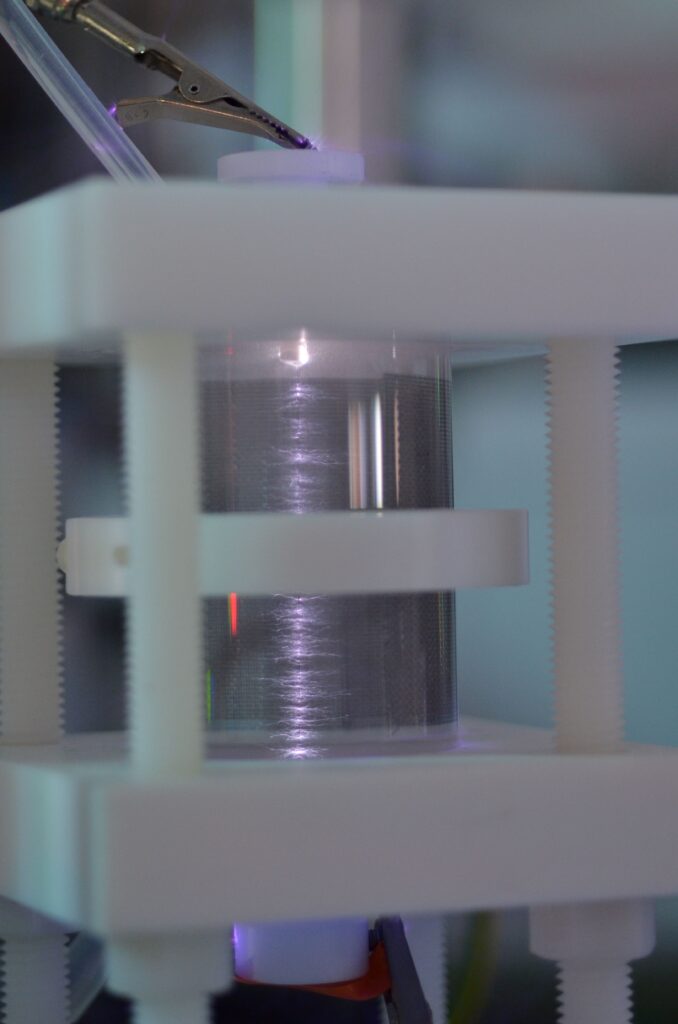
Degradation of chemical contamination by means of an electric discharge (plasma) submerged in waste or process water
The water passes through a coaxial electrode geometry to which nanosecond high voltages pulses with an amplitude of 80,000-100,000 V are applied (Fig. 1 + 2: Photograph of an electric discharge in water. The plasma is generated at the inner electrode of the coaxial geometry and propagates outwards forming characteristic filaments.). Due to the high electric field strength, the liquid is transformed into a plasma state, which spreads out in fine filaments in the liquid from the centre towards the outer electrode (Fig. 3: Schematic drawing of the device for water treatment by electric discharges submerged in water.).
Various reactive species (e.g. hydroxyl radical, atomic oxygen and hydrogen, superoxide and dissolved electron), UV-C radiation (with significant intensity even below 200 nm) and shockwaves are generated. The technology can be used to decompose recalcitrant chemical contaminants such as pharmaceutical residues (e.g. antibiotics, painkillers, hormones, X-ray contrast agents, etc.) and agrochemicals, as well as microbiological contaminants (e.g. Legionella, multi-resistant bacteria, etc.). As a by-product of the treatment, hydrogen is formed, which can be separated for further use.
TRL: 4 (validated in laboratory experiments)
Deliverables
– 1 patent granted (EP)
– Plasma-based system for treatment of polluted water
– Expertise in development of plasma-based water treatment systems for joint activities in process optimisation and technology upscaling
– Electrical and chemical characterisation of plasma and physico-chemical characterisation of treated water
Another strength of this technology is the inactivation of (multi-resistant) microbiological contamination.
Possible areas of application that can be addressed with this technology include the treatment of drinking water as well as industrial, municipal and hospital waste water.
Additional advantages of this technology are the easy handling and ‘on demand’ operation. In contrast to most established methods, no additional chemicals or catalysts are required.
More Info and Video
Contact Listings Owner Form
- Learn about who has visited this offer
- Get funding opportunities matching this technology
- Get detailed access statistics as listing owner

